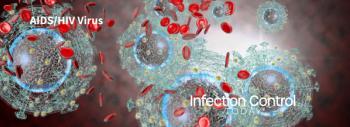
- Infection Control Today, November/December 2023 (Vol. 27 No. 8)
- Volume 27
- Issue 8
Examining Vulnerability Factors in Patients With Candida auris in Maryland
A study in Maryland from June 2019 to December 2021 analyzed 140 Candida auris cases, revealing that patients often resided in disadvantaged neighborhoods with higher crowding, uninsured rates, and racial diversity. ICT speaks to the lead author.
That nursing facilities in certain areas experience more outbreaks of Candida auris raises the question of why this happens. Though C auris is rare in the United States, it is commonly found in long-term care facilities and is more prevalent in socioeconomically disadvantaged regions. A study titled "Candida auris and Neighborhood Socioeconomic Vulnerability in Maryland" was presented at IDWeek 2023 in Boston, Massachusetts, and it sheds light on this issue.
This study explored 140 C auris cases in Maryland between June 2019 and December 2021, finding that patients frequently lived in disadvantaged neighborhoods with elevated crowding, uninsured populations, and diverse racial backgrounds. These factors may contribute to the spread of C auris, with 30% of affected nursing facilities located in socioeconomically disadvantaged areas.
To find out more about the study’s findings, Infection Control Today® (ICT®) spoke with Lauren Leigh Smith, MD, MAS, assistant professor, University of Maryland, Baltimore, Maryland, about the poster presentation she gave at IDWeek.
“We looked at the neighborhoods where patients lived and the neighborhoods where nursing facilities were, “Smith said. The reason why we chose to look at neighborhoods is because you can get a lot of different information about the environment that patients live in, and how that can contribute to illness overall. So, we looked at something called a vulnerability index.”
Leigh then said that they also looked at an area deprivation index. “What that does is it builds upon information that is built into the US Census. It takes that information and looks at different variables of the neighborhood that a patient lives in. For instance, it'll look at things like poverty, housing, racial, and ethnic minority status, and then it'll give you a risk, a score. And you can see how vulnerable that community is compared to other communities in the nation or the state.”
Then Leigh and the other investigators were trying to get a better understanding of the nursing homes in the state of Maryland. “When we talk about vulnerability indices, we're really trying to get a better understanding of how disadvantaged neighborhoods are and how vulnerable the people in these neighborhoods are. Originally, the big indices that we use are something called the social vulnerability index. And that's put out by the CDC, and it looks at different domains. And really what it was used for was to help emergency response planners and public health officials map and plan communities that likely need more support.”
Articles in this issue
almost 2 years ago
Kitchen Nightmares: Health Care Foodborne Outbreaksalmost 2 years ago
Weekly Rounds: Challenging MRSA Precautions, Bug of the Month, and Morealmost 2 years ago
Chief Infection Prevention Officer: Leading the Way Into the Futurealmost 2 years ago
Bug of the Month: I Like Swimming in Water and Popping Up in Foodalmost 2 years ago
The Cleaning and Disinfection of Handheld Equipmentabout 2 years ago
Overcoming Challenges to Eye Device Reprocessing: A 3-Year StudyNewsletter
Stay prepared and protected with Infection Control Today's newsletter, delivering essential updates, best practices, and expert insights for infection preventionists.






